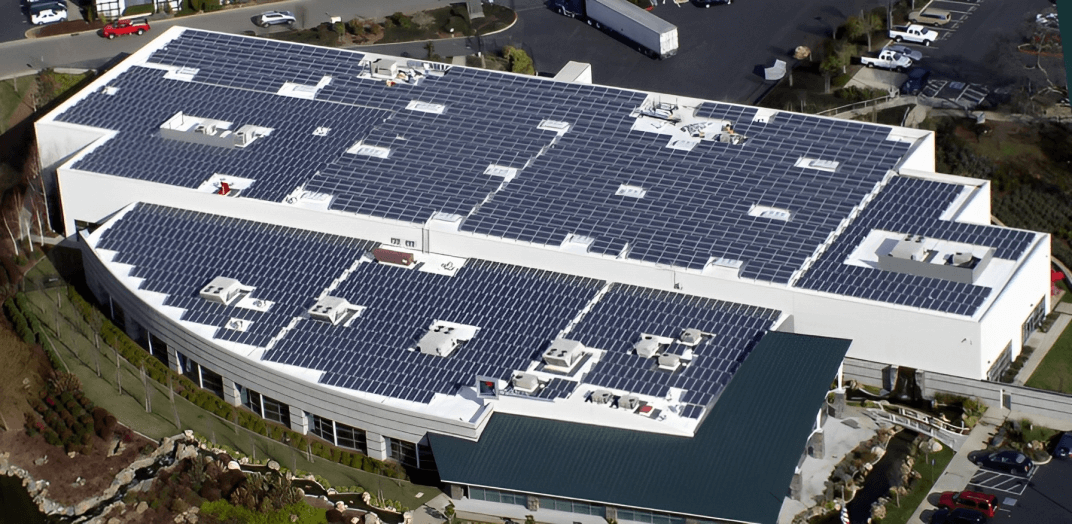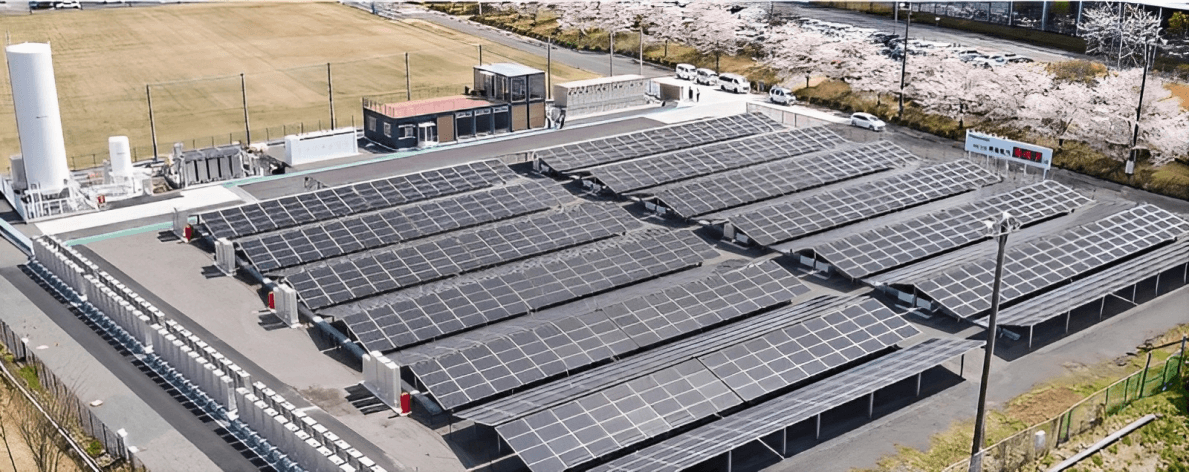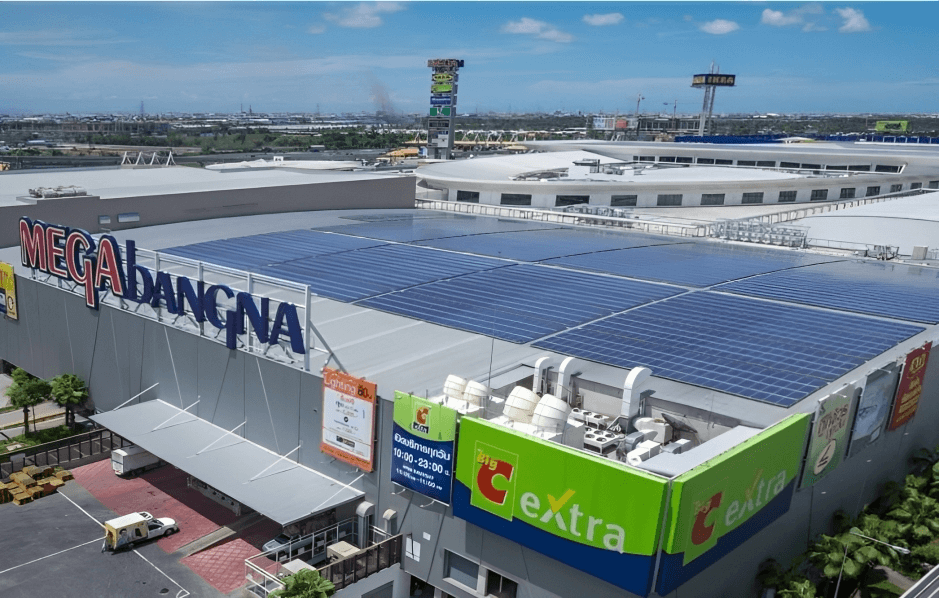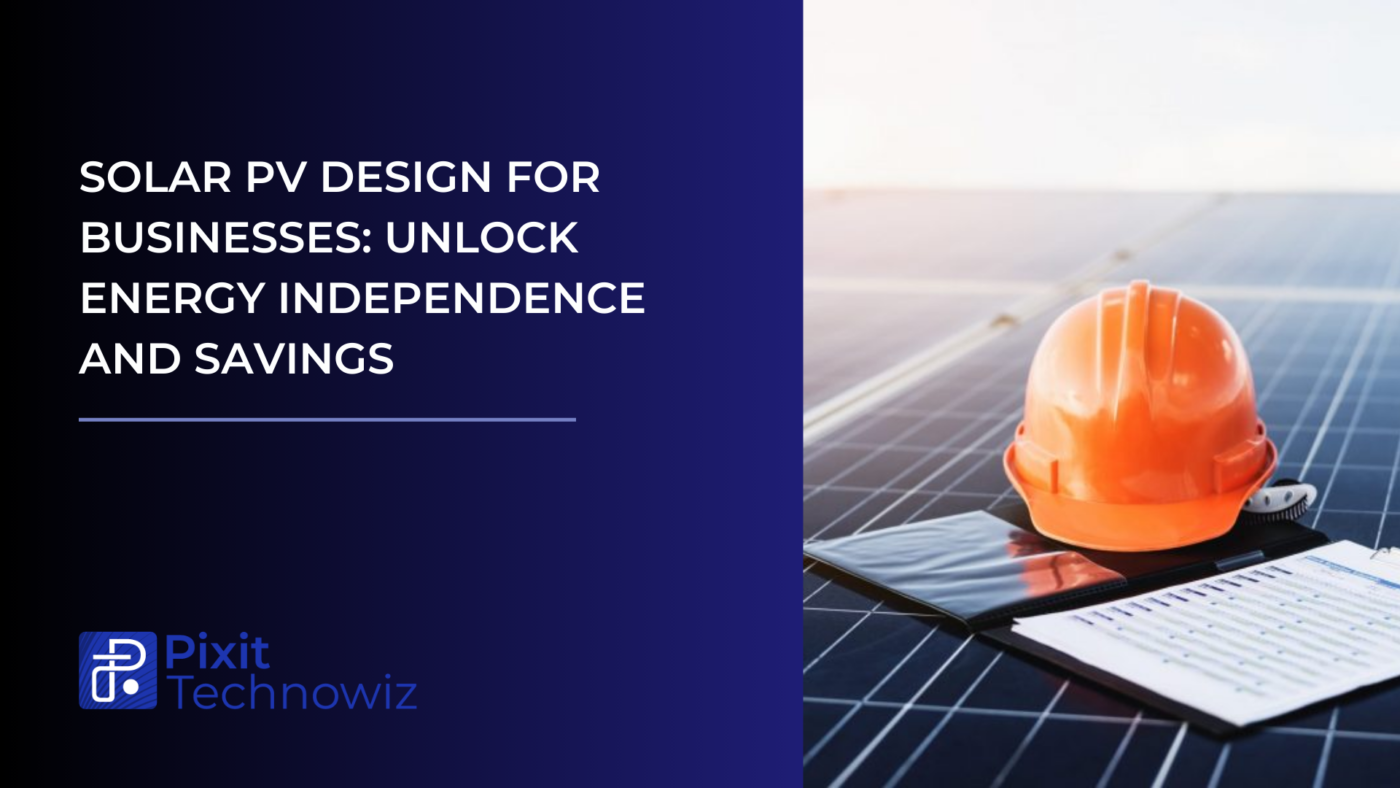Introduction: The Dawn of Solar Power in Business
Solar PV Design for bussinesses can be a boon, in the era of sustainable business practices. Solar power is emerging as a beacon of hope. It’s not just about harnessing renewable energy; it’s about unlocking a new realm of energy independence and savings for businesses.
The Science Behind Solar PV Systems
Solar Photovoltaic (PV) systems are a marvel of modern science. They convert sunlight directly into electricity using a technology called the photovoltaic effect. It’s a process that involves photons from sunlight knocking electrons into a higher state of energy to create electricity.
A Solar PV system is more than just panels. It’s an intricate network of components, including solar panels, inverters, mounting equipment, and often a monitoring system to track energy production. Each plays a crucial role in converting sunlight into usable electricity and ensuring it’s safely and efficiently delivered to your business.
Why Businesses Should Consider Solar PV Design
Solar PV systems represent a significant opportunity for cost savings. While there’s an upfront investment involved, the return on investment (ROI) over the system’s lifetime is impressive. Businesses can drastically reduce their utility bills, and in some cases, even generate a surplus of energy that can be sold back to the grid.
Solar PV systems are a powerful tool for businesses to reduce their carbon footprint. By generating electricity from sunlight, a renewable resource, businesses can significantly decrease their reliance on fossil fuels and reduce their greenhouse gas emissions.
The PR Case: Enhancing Corporate Social Responsibility
Adopting solar PV systems also enhances a company’s Corporate Social Responsibility (CSR) profile. It sends a strong message to stakeholders – including customers, employees, and investors – about the company’s commitment to sustainable practices.
Solar PV Design: The Art of Maximizing Solar Potential
- Site Assessment: Choosing the Ideal Location for Solar Panels :The first step in solar PV design is a thorough site assessment. This involves evaluating the potential solar energy yield at your location, considering factors like geographic location, shading, and roof orientation and tilt.
- Panel Orientation and Tilt: Capturing Maximum Sunlight: The orientation and tilt of solar panels have a significant impact on their energy production. The goal is to position them to capture maximum sunlight throughout the year. In the Northern Hemisphere, for instance, panels are typically oriented towards the south.
- System Size: Determining Your Energy Needs: The size of the solar PV system is determined based on your energy needs. This involves analyzing your electricity bills to understand your usage patterns and then designing a system that can meet or offset this demand.
The Financial Implications of Solar PV Design for Businesses
The initial investment for a solar PV system includes costs for the solar panels, inverters, mounting equipment, installation labor, and any necessary permits or inspections. While this can be a significant outlay, the long-term savings often make it a worthwhile investment.
Once installed, a solar PV system can drastically reduce, or in some cases eliminate, your electricity bills. The exact savings depend on factors like the size of the system, your energy usage, and the local cost of electricity. Many governments offer incentives and tax credits for businesses to adopt solar energy. These can significantly reduce the net cost of the system, making solar energy an even more attractive investment.
Solar PV Design Considerations for Different Types of Businesses

Solar PV for Office Buildings
Office buildings are prime candidates for solar PV systems. With large, flat roofs and significant electricity consumption, particularly during the day when solar energy production is highest, solar PV can result in substantial savings.

Solar PV for Manufacturing Facilities
Manufacturing facilities, with their high energy demands and often expansive roof space, can greatly benefit from solar PV systems. These systems can offset a significant portion of their energy consumption, leading to substantial cost savings.

Solar PV for Retail Stores
Retail stores can also leverage solar PV systems for cost savings and to enhance their green credentials. With operations typically during daylight hours, retail stores can effectively use the electricity generated by a solar PV system.
Overcoming Common Challenges in Solar PV Design
- Space constraints can be a challenge in solar PV design. However, innovative solutions like carport installations, solar window films, and vertical solar installations can help overcome this challenge.
- Local regulations and permitting requirements can also pose challenges. It’s crucial to understand these requirements early in the design process to ensure compliance and avoid potential delays.
- Safety and durability are paramount in solar PV design. This involves choosing high-quality components, ensuring proper installation, and implementing regular maintenance and inspections.
The Role of Pixit Technowiz’s Professionals in Solar PV Design
Why You Should Hire a Professional Solar Designer from Pixit Technowiz?
A professional solar designer brings expertise and experience to the table. They can optimize the system design for maximum energy production, navigate local regulations, and ensure a safe and durable installation.
Why Choose Pixit Technowiz for Solar PV Design Services?
When choosing a solar PV design company, look for experience, a strong track record, certified professionals, and excellent customer reviews. It’s also beneficial if they offer comprehensive services, including installation, maintenance, and assistance with incentives and financing. Pixit Technoqiz is a renowned Soalr PV design service provider for Businesses in the US. Having years of cumulative experience in the industry gives Pixit an edge over competition.
The Future of Solar PV Design: Trends to Watch
- Solar-plus-storage systems, which pair solar PV systems with battery storage, are on the rise. These systems allow businesses to store excess solar energy for use when the sun isn’t shining, enhancing energy independence.
- Innovations in solar panel technology, including higher efficiency panels and bifacial panels that capture sunlight on both sides, are improving the energy yield and reducing the space needed for solar PV systems.
- Community solar projects, which allow multiple participants to benefit from a single solar installation, are growing in popularity. These projects make solar energy accessible to businesses that may not have suitable space for a solar PV system.
Conclusion: Embracing Solar PV Design for a Sustainable and Profitable Future
Embracing solar PV design is a strategic move towards a sustainable and profitable future. It’s about unlocking energy independence, reducing your environmental impact, and reaping significant financial savings. As the sun rises on a new day, it also heralds a new era of business opportunities with solar power.
Connect with Pixit Technowiz today and geta free 3-Day Trial for Solar PV Design Services! Get your design layout analyzed by our experts at no extra cost!

